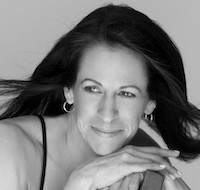
If practicing yoga is about more than just the pose, then so is teaching yoga.
And while we can be given tools to help us learn to instruct, teaching is something that will come from knowledge that is already within us.
When we first start teaching, it’s easy to get lost in the instructing and forego the teaching.
Instructing requires us to have a strong working knowledge of the body and a firm grip on proper alignment. They are surface elements of the practice which are all very important.
Teaching comes from the wisdom we have gained from our own personal experiences and our willingness to break open enough to be willing to share. It is not something that can be learned.
Instructing comes from the head. Teaching comes from the heart.
Often in my classes after giving detailed alignment of a pose, I then tell my students to just let all of that go. Stop trying to do the pose and allow yourself to just be in the pose.
When we step into the classroom to lead a class, it’s not much different than stepping onto our own mat to practice. Try not to get lost in the doing.
1. Don’t Compromise Your Foundation
I constantly tell my students in class that the pose will only be as strong as the foundation they build it on. And nothing is worth sacrificing a calm, steady foundation. The same is true for teaching.
In asana practice it might start with a smooth, flowing breath and a stable, sturdy connection to the ground.
Our teaching foundation develops from what keeps us personally coming back to the mat. Day after day that with which we connect to.
There can be an overwhelming amount of information to be absorbed, and then expected to be applied during the training process. One of my first teachers told us to take what makes sense and throw the rest away. I hold onto that to this day. I stopped trying to teach the right way, and began teaching my way. The way that feels right for me.
This is found deep inside, an intuitive nature that speaks from the heart. Our truth.
Our teaching is only as strong as the foundation we build it on. Nothing is worth compromising this. No class, no studio, no job. And the fact is, when we let our authenticity shine through, all of those things will come.
Find your truth, the students will hear.
2. Focus more on the In and less on the Out
One of the most challenging things I still find to this day when teaching, is to get students to let go of the outward focus of the practice (pose), and put more effort to understanding and beginning with the inward focus (breath). I try to emphasize if they trust the inner process, the outer process will begin to happen.
And as a newer teacher, it’s sometimes easy to get caught up with the same thing. Fearful of boring our students, we end up spending large amounts of time creating new sequences, interesting transitions or finding more challenging poses. Instructing begins to trump teaching.
The reality is, holding a student’s attention and keeping it interesting comes from teaching what is inside of us. Speaking directly from our hearts, our experiences. Channeling those experiences to make them relevant to our students, without making it about ourselves.
At my lowest points, I have been able to make the greatest connections with my students. I have walked into a classroom more times than I would like to remember thinking “how can I possibly hold my students up when I can barely hold myself up?” At those times the only thing I had was my own practice. I had to be so firmly grounded, focused and present that only my truth at that moment could come out.
When we awaken our own inner teacher and let it free, our students will begin to find theirs too. This will not come from our sequence, but it will come from our words. Headstand and arm balances are not required. Raw honesty and continuous self study are. If we never stop working on the inside, guaranteed the outside will start to fall into place.
Find your inner teacher, and the students will follow.
3. It’s About the Process, Not the Destination
There will always be three more things you need to know. And two years from now, five years from now and 10 years from now there will still be three, five, 10 more things you need to know—and that’s ok. I have been teaching for almost 20 years, and I hope I never get to a place where I feel there is nothing left to learn. I mean, if we are living how can we not be learning?
Just like our practice on the mat, teaching yoga is a process as well. Each day it will be different and it always will be changing. It will never be perfect. And not always easy.
Give yourself a break in striving for the perfection of instructing. Allow yourself the imperfectness and freedom to teach.
Do less. Be more.
Instruct to exercise the body. But teach to exercise the soul.
~
~
Love elephant and want to go steady?
Sign up for our (curated) daily and weekly newsletters!
Apprentice Editor: Jessica Sandhu / Editor: Emily Bartran
Photo: Author’s Own






Read 2 comments and reply